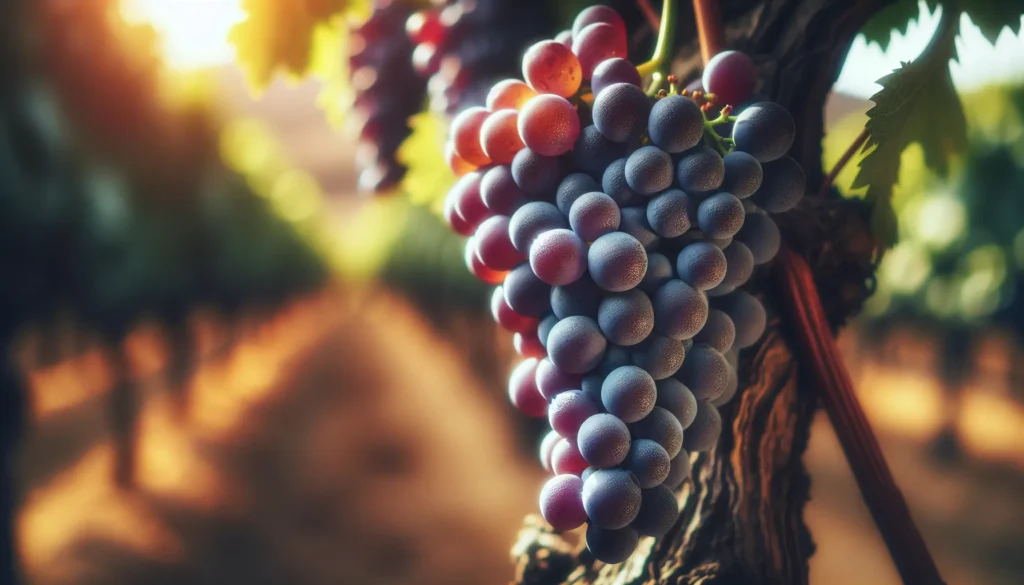What Distinguishes Sangiovese from Other Red Wines?
In our quest to uncork the unique characteristics of Sangiovese that set it apart from other red wines, we start with insights from a seasoned Sommelier on how this varietal thrives in Tuscany’s climate. Alongside expert opinions, we’ve gathered additional answers that paint a broader picture of Sangiovese’s distinctiveness. From its evolving garnet to orange hue to the robust flavor that enhances blends, join us as we explore the multifaceted nature of this beloved wine.
- Thrives in Tuscany’s Climate
- Sangiovese’s Savory Chameleon Taste
- High Acidity and Firm Tannins
- Evolving Garnet to Orange Hue
- Distinct Tomato Note Profile
- Quintessential in Chianti Wines
- Robust Flavor Enhances Blends
Thrives in Tuscany’s Climate
Unlike Cabernet Sauvignon or Merlot, Sangiovese does not appear to be adaptable to different climates. It thrives in a single growing region—Tuscany. Being a late-ripening grape, Sangiovese is challenging to grow. In good vintages, a Chianti Classico Riserva, Brunello, or Vino Nobile di Montepulciano has a beautiful brick color, lighter than a Cabernet Sauvignon but deeper than most Pinot Noirs; it has a unique perfume (leather, at times rustic but with subtle fruit) and pronounced tannins that don’t rule out early drinking but do enable it to improve in the bottle for a couple of decades. And unlike Cabernet Sauvignon, Merlot, or Pinot Noir, Sangiovese is not normally a Happy Hour wine; we are blessed with Sangiovese’s compatibility with food.
Jordan Ross
Sommelier, Key Largo Anglers Club
Sangiovese’s Savory Chameleon Taste
Sangiovese stands out for its savory taste. This wine is like a chameleon, offering a range of flavors from earthy and rustic—typical of many Chianti Classico wines—to more rounded and fruit-forward tastes. No matter where it’s grown, it always shows cherry flavors, complemented by subtler hints of tomato.
Sangiovese’s natural acidity, savory nature, and medium body make it a very adaptable wine for food pairings. High-quality Sangiovese is known for its high acidity, firm tannins, and balanced taste. Its flavor profile often includes dark cherries and blackberries, sometimes accompanied by secondary notes like tomato leaf and dried herbs.
 Renato Fernandes
Renato Fernandes
Clinical Nutritionist, Saude Pulso
High Acidity and Firm Tannins
Sangiovese is recognizable for its notably high acidity which gives the wine a certain liveliness on the palate, and its firm tannin structure that lends a gripping quality, typical of this varietal. This characteristic combination sets the stage for a wine that can age gracefully and develop more complex flavors over time. The acidity and tannin structure are the backbone of the wine, allowing it to pair well with a variety of foods, especially those rich in fats and proteins.
The structure of Sangiovese can stand up to hearty dishes, leading to an enhanced dining experience. Explore this refined wine with your next meal for an exemplary pairing.
Evolving Garnet to Orange Hue
One of the defining attributes of Sangiovese wine is its evolving visual appeal, which starts off with a deep garnet hue in its youth and gradually develops an orange tint as it matures. This transformation in color is not just an aesthetic change but also indicates the wine’s journey through time, giving a visual clue to its age and sophistication. As red wines go, this visual aspect makes Sangiovese particularly intriguing for those who appreciate the art of viniculture.
Observing the wine’s color shift is a way to connect with the history and craftsmanship embedded in each bottle. Pour a glass of Sangiovese and witness the passage of time right before your eyes.
Distinct Tomato Note Profile
Sangiovese wine offers an unusual yet delightful taste profile, with conspicuous notes of tomato that distinguish it from other red wines. These savory characteristics are complemented by a medley of red fruit flavors, creating a complex bouquet that tantalizes the senses. The tomato-like quality is a hallmark of Sangiovese, hinting at the wine’s Italian origins and making it a curiosity for those used to more conventional fruit-forward reds.
It’s a taste that pushes the boundaries of traditional red wines, challenging the drinker to explore beyond the familiar. Let your next glass of wine be a Sangiovese and savor this distinctive flavor profile.
Quintessential in Chianti Wines
The prominence of Sangiovese as the dominant grape in Chianti wines is a testament to its quintessential role in Italian viniculture. The acclaim of Chianti, a region synonymous with quality wine production, is due in large part to the Sangiovese grape’s ability to reflect its terroir and to produce nuanced, well-rounded wines that are reflective of the region’s wine-making heritage. The association between Sangiovese and Chianti is steeped in history and tradition, making any bottle bearing its name one that carries a rich narrative of Italian winemaking expertise.
Such wines are ideal for those who not only seek to enjoy a bottle but also to understand the stories behind it. Choose a bottle of Chianti on your next wine exploration to experience Sangiovese in its most celebrated form.
Robust Flavor Enhances Blends
Sangiovese is often praised for its robust flavor profile, which is hearty enough to contribute depth when used in blends with other varietals. This characteristic makes it a flexible component in the creation of many red wine blends, providing structure and a reliable foundation of flavor that complements other grapes. Its ability to enhance blends without overpowering them is a hallmark of its adaptability and a reason why it’s so widely used by winemakers.
Sangiovese’s robustness is an invitation to discover how different grapes can harmonize to create something greater than their individual parts. Embark on a tasting journey to experience how Sangiovese contributes to the complexity of blended wines.
Submit Your Answer
Would you like to submit an alternate answer to the question, “What unique trait distinguishes Sangiovese from other reds?”
